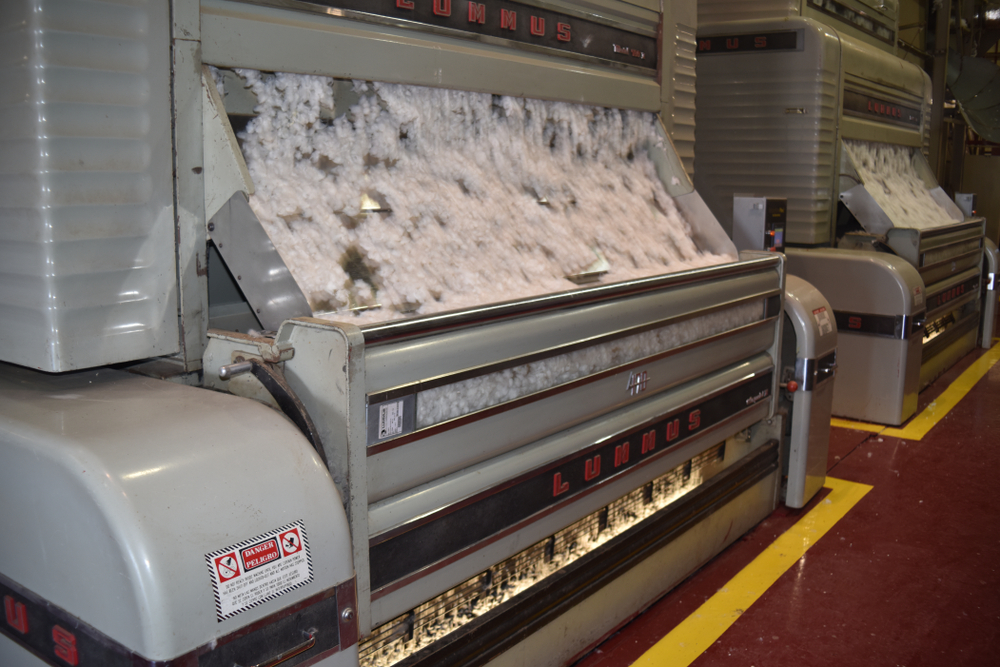
How Will AI Revolutionize Efficiency and Productivity in Cotton Processing?
August 27, 2024 6:41 pm Leave your thoughtsIn the ever-evolving world of agriculture, the integration of artificial intelligence (AI) into various sectors is transforming traditional practices and setting new benchmarks for efficiency and productivity. Cotton processing, a critical part of the cotton industry, stands to gain immensely from AI innovations. This article delves into how AI will revolutionize efficiency and productivity in cotton processing, highlighting key technological advancements and their implications for the industry.
The Current State of Cotton Processing
Traditional Methods and Their Limitations
Cotton processing involves several stages, including ginning, spinning, and weaving. Traditionally, these processes have relied on manual labor and mechanical systems that, while effective, have limitations in terms of speed, precision, and adaptability. Manual sorting and quality control, for example, can be time-consuming and prone to human error. Mechanical systems, though automated, often struggle with variations in cotton quality and environmental conditions.
The Need for Innovation
As the demand for cotton products grows and sustainability concerns mount, there is an increasing need for innovation in cotton processing. Traditional methods are not always capable of meeting the demands for higher efficiency, reduced waste, and improved quality control. This is where AI comes into play.
AI in Cotton Processing: Key Technologies
Machine Learning for Quality Control
Machine learning algorithms are at the forefront of AI technologies transforming cotton processing. These algorithms can analyze vast amounts of data to identify patterns and anomalies in cotton quality that may be missed by human inspectors. By using machine learning, cotton processors can enhance quality control measures, ensuring that only the best fibers are selected for production.
- Benefits: Improved accuracy in detecting defects, reduced waste, and enhanced overall quality of the final product.
- Applications: Automated visual inspection systems and predictive maintenance of processing equipment.
Computer Vision for Sorting and Grading
Computer vision technology, which enables machines to interpret and understand visual information, is revolutionizing sorting and grading processes in cotton processing. Using high-resolution cameras and sophisticated image recognition algorithms, AI systems can assess the color, texture, and contamination levels of cotton bales.
- Benefits: Faster and more precise sorting, reduced manual labor, and consistent grading standards.
- Applications: Automated sorting systems, real-time monitoring, and quality assurance.
Robotics for Automation
Robotic systems, powered by AI, are enhancing automation in cotton processing. From picking and transporting bales to handling machinery and performing repetitive tasks, robots are increasingly taking on roles that were previously performed by humans. This shift not only improves efficiency but also helps in mitigating labor shortages and reducing operational costs.
- Benefits: Increased productivity, lower labor costs, and enhanced safety.
- Applications: Automated bale handling, robotic arms for machinery operations, and logistics management.
How AI Enhances Efficiency and Productivity
Reducing Downtime and Maintenance Costs
AI-driven predictive maintenance systems can forecast equipment failures before they occur. By analyzing data from sensors embedded in machinery, AI algorithms can identify signs of wear and tear, enabling proactive maintenance and reducing unexpected downtime. This leads to significant cost savings and ensures that processing operations run smoothly.
- Benefits: Fewer equipment breakdowns, extended machinery lifespan, and cost-effective maintenance.
- Applications: Predictive maintenance tools and condition monitoring systems.
Optimizing Resource Utilization
AI technologies can optimize resource utilization by analyzing various factors such as energy consumption, water usage, and raw material inputs. By identifying inefficiencies and suggesting improvements, AI helps in reducing waste and maximizing the use of resources. This not only enhances productivity but also contributes to more sustainable practices in cotton processing.
- Benefits: Lower operational costs, reduced environmental impact, and improved resource management.
- Applications: Energy management systems, water usage optimization, and supply chain analytics.
Enhancing Decision-Making with Data Analytics
AI-powered data analytics provides valuable insights into every aspect of cotton processing. By analyzing historical data, market trends, and real-time information, AI systems help decision-makers make informed choices. This includes optimizing production schedules, managing inventory, and forecasting demand, leading to more strategic and effective operations.
- Benefits: Better decision-making, improved planning, and increased responsiveness to market changes.
- Applications: Advanced analytics platforms, demand forecasting tools, and inventory management systems.
Case Studies: AI in Action
Case Study 1: Automated Cotton Ginning
A major cotton processing facility implemented an AI-driven automated ginning system that utilizes machine learning and computer vision technologies. The system improved the accuracy of cotton separation and reduced waste by 20%. Additionally, it minimized the need for manual intervention, leading to faster processing times and lower labor costs.
Case Study 2: AI-Enhanced Cotton Sorting
Another facility adopted an AI-powered sorting system that uses computer vision to assess cotton quality. The system was able to sort cotton bales with a precision rate of 95%, significantly higher than manual sorting methods. This enhancement not only improved the quality of the processed cotton but also increased throughput by 30%.
The Future of AI in Cotton Processing
Emerging Technologies
As AI technology continues to advance, new innovations are likely to further transform cotton processing. Developments in areas such as artificial neural networks, advanced robotics, and real-time data processing will drive even greater improvements in efficiency and productivity.
Sustainability and AI
The role of AI in promoting sustainability is becoming increasingly important. By optimizing resource use, reducing waste, and enhancing supply chain transparency, AI contributes to more sustainable cotton processing practices. This aligns with the growing demand for environmentally friendly and ethically produced cotton products.
Challenges and Considerations
While AI offers numerous benefits, there are also challenges to consider. Implementing AI systems requires significant investment, technical expertise, and adaptation to new workflows. Additionally, ensuring data security and addressing ethical concerns related to AI use are important aspects that need to be managed effectively.
Conclusion
AI is poised to revolutionize efficiency and productivity in cotton processing by introducing advanced technologies that enhance quality control, automate operations, and optimize resource use. The integration of machine learning, computer vision, and robotics will not only streamline processes but also contribute to more sustainable and cost-effective practices. As the cotton industry embraces these innovations, the future of cotton processing looks promising, with AI leading the way toward greater efficiency and productivity.
Need Cotton Mill & Cotton Gin Components in Lubbock, TX?
Welcome to M.B. McKee Company, Inc. M.B. McKee Company, Inc. has been serving our local community of Lubbock since 1943. Locally owned and family operated, we provide great customer service and solutions for ongoing issues. With over 70 years of experience, our products, services, and engineering will always exceed your expectations. Our products include bearings, belts, chains, conveyor systems, gearing, lifts, motors, drives, product separation, tools, valves, and fittings. Our engineering division also provides general formulas, NEMA motor frames, elevator legs, screw and belt conveyors, lift charts, components from Baldor and Flexco, and various interchangeable parts. Contact us today to learn more about what we can do for you!
This post was written by admin

